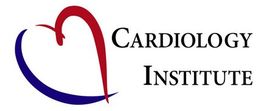Central Auckland, East Auckland, North Auckland, South Auckland, West Auckland > Private Hospitals & Specialists >
Cardiology Institute
Private Service, Cardiology
Cardiac Arrhythmias: types, investigations and some treatments
A complex electric system within the heart muscle controls and coordinates your heart rate and heart muscle contraction. When you exert yourself, the heart rate increases; when you rest, it goes slower.
A number of conditions affect heart rate and/or rhythm. Heart rate simply refers to how fast your heart is beating. Heart rhythm refers to the electrical source that is driving the heart rate and whether or not it is regular or irregular.
- Sinus rhythm is the normal rhythm
- Arrhythmia means abnormal rhythm
- Fibrillation means irregular rhythm or quivering of one part of the heart
- Bradycardia means slow heart rate
- Tachycardia means fast heart rate
- Paroxysmal means the arrhythmia comes and goes
- Electrocardiogram (ECG). This trace of the heart's electrical activity gives the diagnosis of the source of the arrhythmia. This is often normal at rest and more extensive testing is needed to try and catch the arrhythmia especially if it is intermittent.
- Ambulatory ECG. This can be performed with a Holter monitor which monitors your heart for abnormal rhythm during normal activity in an uninterrupted 24-hour period. During the test, electrodes attached to your chest are connected to a portable recorder - about the size of a wallet - that's attached to your belt or hung from a shoulder strap. Another form of ambulatory ECG test is an Event recorder which covers 1-2 weeks. If you have any symptom, such as dizziness, you press a button on a recording device that records your heart rhythm made in the minutes leading up to and during your symptoms. Because you can wear this for a longer period of time it has a higher rate of catching your abnormal rhythm.
Was this page helpful?
This page was last updated at 4:28PM on September 14, 2023.

